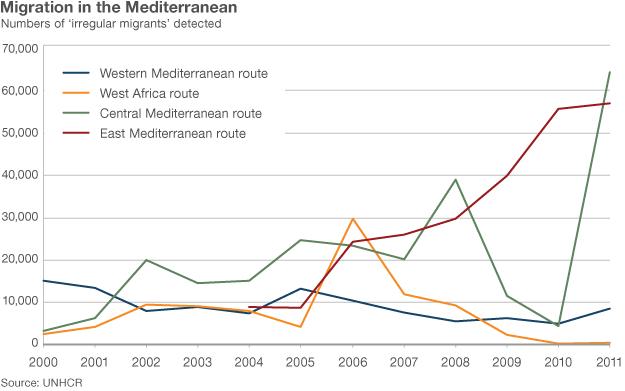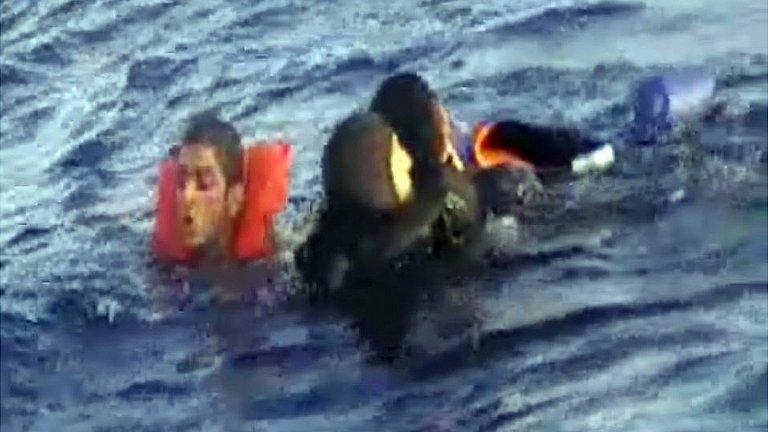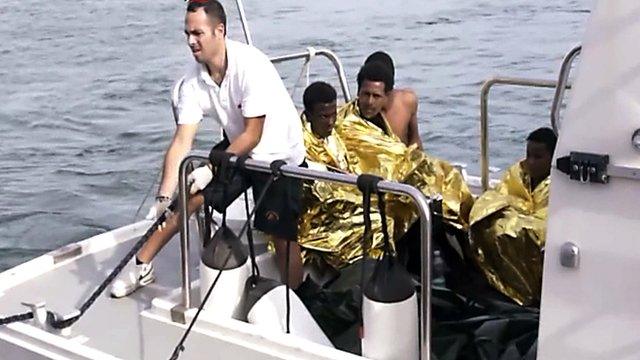Mapping Mediterranean migration
- Published
In the space of a week, at least 750 migrants are feared to have died crossing the Mediterranean Sea.
Many thousands of others have risked their lives this year, fleeing conflict and instability in Africa and the Middle East, in small, often decrepit vessels in an attempt to reach European territories.
But the number of fatalities has risen dramatically in a matter of months. More than 2,200 lives have been lost since June, the UN refugee agency UNHCR believes.

That is because of the big increase in numbers crossing the Mediterranean. While some 60,000 reached European shores in 2013, so far more than 130,000 have arrived in 2014.
The majority of migrants head for Italy, prompting a crisis that the country's navy, coast guard and beleaguered immigration facilities are struggling to handle.
Last October, 366 people died off the Italian island of Lampedusa when the fishing boat they were travelling in from Libya capsized.
Nearly all the victims were Eritrean. Migrants crossing in the central Mediterranean - from Libya and Tunisia - have until recently come mostly from Eritrea and Somalia, although increasing numbers of Syrians fleeing the country's civil war are also making the journey.
Libya has become a popular starting point for many journeys, with people traffickers exploiting the country's power vacuum and increasing lawlessness.
The relatively short distance to Lampedusa encourages more people to risk the journey.
Migration charities believe that as many as 20,000 people may have died at sea trying to reach Europe in the last two decades.
Malta's prime minister warned after the Lampedusa tragedy that the Mediterranean was in danger of becoming of a "cemetery" for desperate migrants.
'Age-old' issue
Matthew Price, on board an Italian navy ship, witnesses a rescue unfold
The number of people using the various routes across the Mediterranean has ebbed and flowed.
From 2008-2012, large numbers of migrants crossed between Turkey and Greece via the so-called Eastern Mediterranean route, border management agency Frontex reports.
In response, Greece bolstered border controls with an additional 1,800 police officers.
However, Frontex suggests that the area remains problematic, and points to "uncertainties related to the sustainability of [Greek] efforts, and evidence that migrants are waiting in Turkey for the end of the operation".
Over the last decade, the central Mediterranean route has experienced periodic surges in migrant traffic.
UNHCR figures suggest that some 25,000 people fled to Italy from North Africa in 2005, a number which dwindled to 9,573 in 2009.
In 2011, this figure rocketed back to some 61,000, driven by the conflict in Libya which culminated in the downfall of Col Gaddafi.
Earlier in the decade, the most popular route was from West Africa to Spain, including its North African territories of Ceuta and Melilla, and the Canary Islands, with some 32,000 irregular arrivals in 2006. This figure had dwindled to just 5,443 by 2011.

- Published14 October 2013

- Published13 October 2013

- Published4 October 2013

- Published4 October 2013
